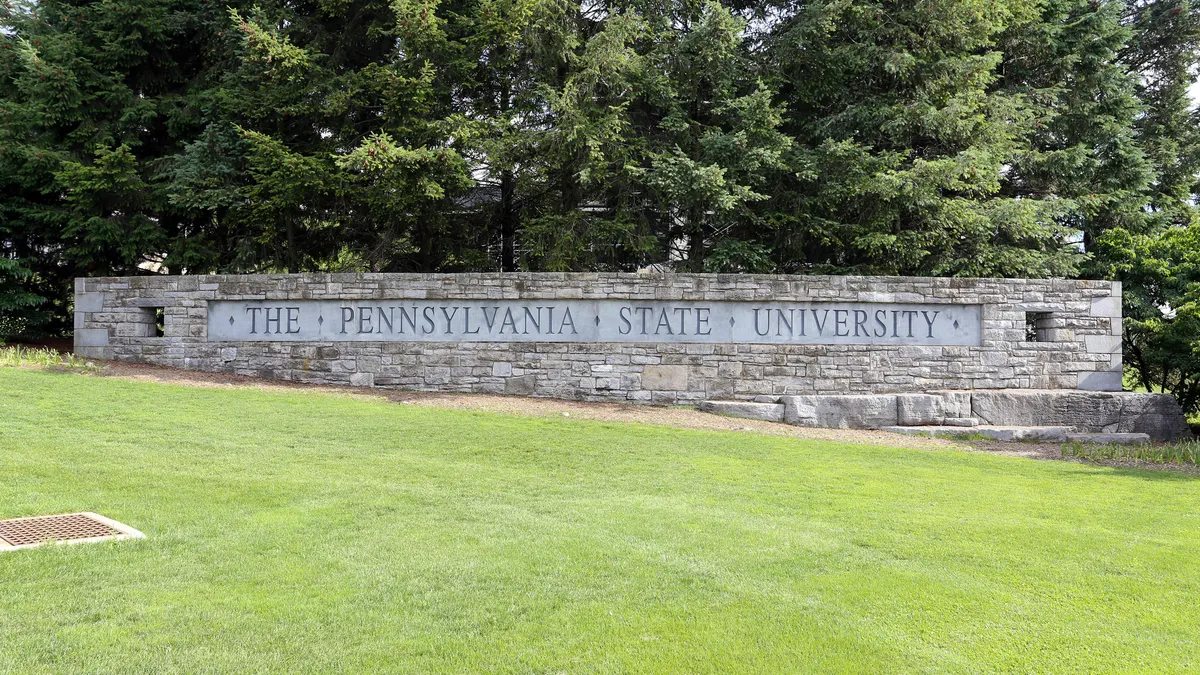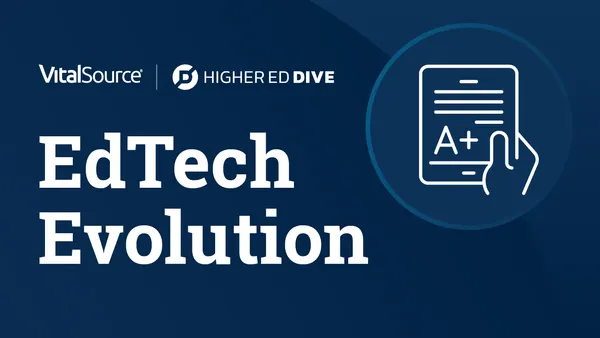By the time the ink was dry on Purdue University's acquisition of for-profit Kaplan University, the higher ed sector was entrenched in two distinct camps: those who thought the deal unfairly let a for-profit college operate under the guise of a nonprofit, and those who argued the move was critical for the public land-grant university to compete in the growing online education realm.
For $1, Purdue got Kaplan's some 30,000 students and 2,500 instructors, forming the basis of its online college, Purdue University Global. The deal's low price also obligates the university to share revenue from the new entity with Kaplan Higher Education, which handles several of its administrative functions, including admissions support, financial aid, marketing and advertising.
The acquisition is still fresh, and many of the potential outcomes noted by critics and advocates are yet to be realized. But Purdue Global is already providing online postsecondary education to students in Indiana and beyond, with a focus on adult learners.
To learn more about how it is fitting in with the rest of the Purdue system and the ways in which it is implementing new educational models such as competency-based education (CBE) and modularized courses, Education Dive spoke with David Starnes, Purdue Global's vice president of academic operations and its chief academic officer. Starnes was previously an executive with Kaplan University.
This interview has been edited and condensed for brevity and clarity.
EDUCATION DIVE: What's been done so far to bring together Purdue and Kaplan?
DAVID STARNES: On the academic side, there wasn't a lot for us to do as far as changing programs, and our faculty didn't have any major shifts take place. It was very seamless for us. [Purdue University has set up a separate office, Purdue Online, to manage online programming across the system and reduce redundancy.]
How about reducing channel conflicts between your programs and existing ones at Purdue?
STARNES: There are no plans to combine courses, but I do see a lot of potential opportunities for us to share courses, maybe even faculty exchanges, and certainly instructional design techniques, online teaching best practices, learning science research, those types of things. A lot of care is going into identifying programs that might overlap or cause confusion for current or prospective students, and to ensure students are in the program that meets their needs.
Who is Purdue Global targeting?
STARNES: Our programs are designed around the needs of working adults. We're not looking for those 18-year-olds that are going to be on campus at, for example, Purdue West Lafayette. The majority of our students also bring a lot of transfer credit, so that's a good indicator they're a fit for us, and they're typically working toward an online bachelor's degree.
You mentioned opportunities for sharing faculty and other expertise across the system. What could that look like?
STARNES: I could definitely see opportunities as Purdue Global grows. Quite often full-time faculty are interested in teaching online, and we would be open to having faculty from across the system teach. It's more about the other areas, though, such as sharing instructional design techniques. We are very familiar with creating and maintaining a high inventory of online courses, perhaps more so than the [other Purdue system campuses] and so we can share what we know. And then teaching best practices. We are also looking for opportunities to do learning science research like we do with other universities.
CBE is a feature of Purdue Global. How does that work in this case?
STARNES: We use CBE — or ExcelTrack — in a variety of ways. Five or six years ago, before we even thought about CBE, we saw the importance of redesigning our curriculum to be offered in smaller pieces. So we started creating entire programs that consisted of courses modularized by outcome. For example, if a course had five outcomes, we created five modules that stand alone and can be delivered as a package. If it was a five-credit course with five modules, each module would be worth one credit.
Previously, we wouldn't always take a course a student wanted to transfer if it didn't meet all of the outcomes on our end. With single-credit modules, we saw an opportunity to transcript individual credits based on outcomes learned at other institutions. That makes it possible to fill gaps by taking only the piece of the course or program you need. If you can take two credits out of a five-credit course because we articulated three, then you saved time, you saved money. That was one of our original intentions, and we are doing that today with our CBE courses.
How does ExcelTrack compare to a typical Purdue Global online course?
STARNES: We've modularized several undergraduate and some of our graduate courses to form our CBE model. All of the courses have the same outcomes, the general education literacies and professional competencies that are in our traditional courses, and are faculty-led. The biggest difference is the pace. ExcelTrack students can go fast or slow down as they want to. It's still very structured, but it has the flexibility to meet their personal circumstances.
Combining modalities is also possible. Students have different learning styles and needs from one course to the next. They can breeze through some courses while for others they may want to slow down, have more interaction and more assessments, and so they can take a traditional course. Other students might need to take one or two extra credits each term. We're allowing students to go back and forth between our CBE and traditional classes as their needs change.
What about non-degree experience?
STARNES: We articulate military and workplace experience at the outcome level. When a student brings in a program, our faculty will evaluate whether it is worthy of credit. There are also ways to take assessments or create portfolios of workplace experience and to explain what you know about that outcome and faculty will evaluate that. An organization may bring their training to us and we will evaluate what credit we can offer.
Shifting gears, the deal faced a lot of criticism for the way in which it brought together a private for-profit and a public nonprofit college. Given your tenure at Kaplan, and in light of the fact that more for-profits are adjusting their business models, what is your view on that resistance?
STARNES: I think the resistance was to be expected. It was definitely a challenge, and I would say it varied within the system. The lack of understanding of what we do and fears of what changes might take place, most of that has moved away. People realize we're not there to replace them, we're there to educate students in Indiana that aren't being educated by Purdue University today. It's early in the process, but little by little most of that is melting away.
What do you think was the biggest hurdle or challenge accounting for that perception?
STARNES: Our challenge was the merging of several distinct cultures — each Purdue University campus has a slightly different culture. How Purdue Global is going to interact with each varies. We're also still interacting daily with our support team at Kaplan. So we're creating a new culture that blends many cultures, and that's a challenge we recognize will take time and is going to evolve as each campus finds its place in this new Purdue Global world.













